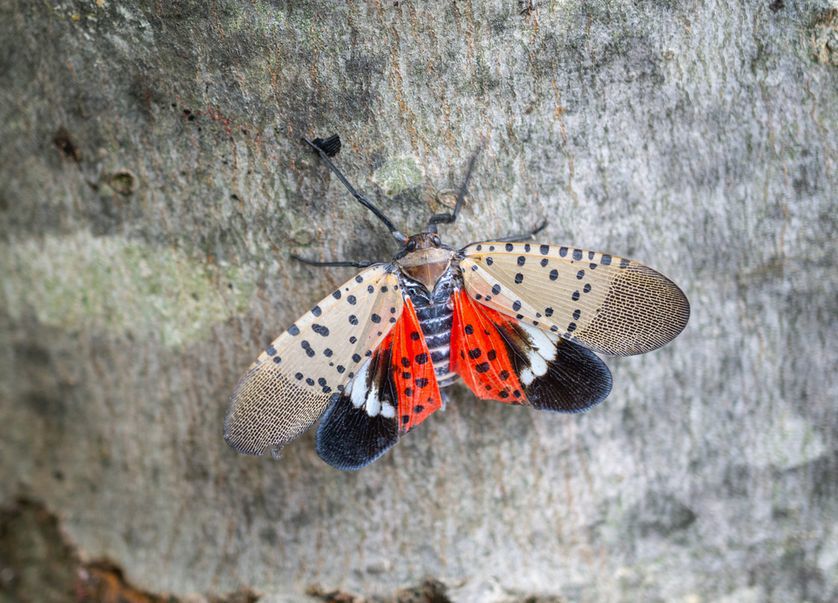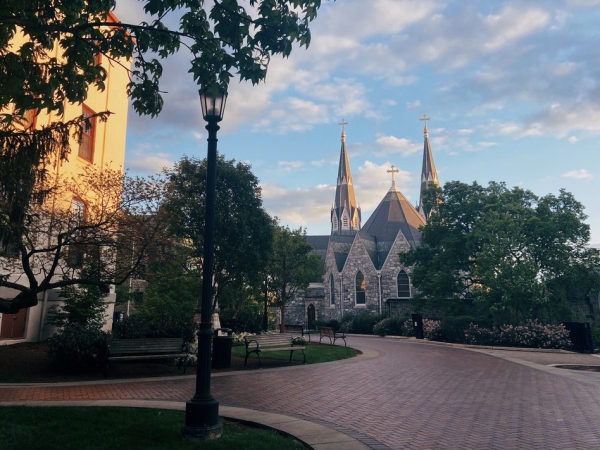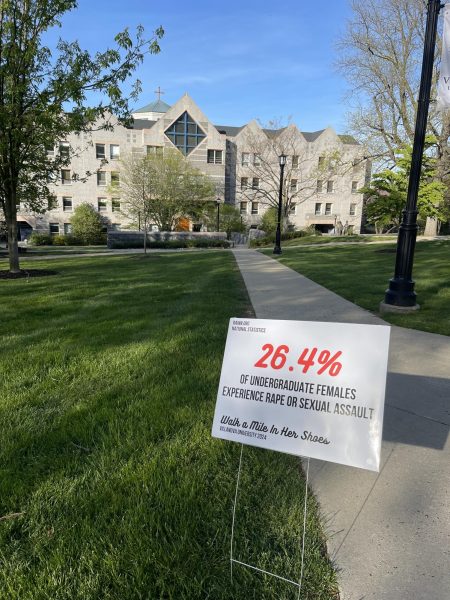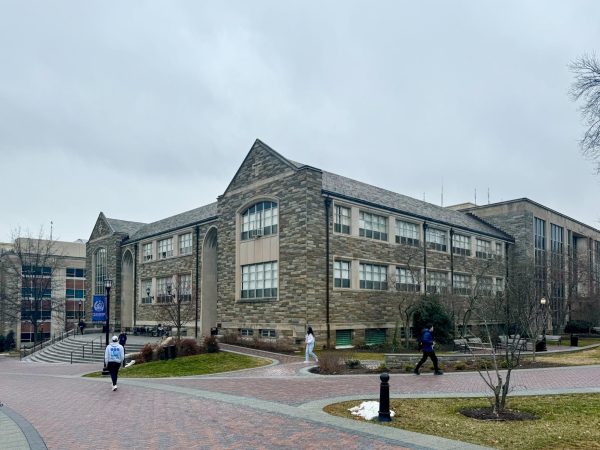Spotted Lanternflies Take Over Campus
September 24, 2019
After plaguing other areas of Pennsylvania for several years now, the invasive spotted lanternfly has spread to Villanova’s campus and surrounding suburbs. These pests pose a serious threat to our ecosystems, in addition to being a general nuisance. Assistant Chair of the Biology Department, Professor Vikram Iyengar, has a breadth of knowledge on the spotted lanternfly. According to Iyengar, these insects are native to China and southeast Asia and were first spotted in the United States in 2014 in Berks County, PA.
“It is so difficult to prevent the global movement of these insects, because the females have the ability to lay their eggs on the tires of cars and masts of boats,” Iyengar said. “This is likely how the spotted lanternflies managed to spread all the way from southeast Asia to the United States.
Spotted lanternflies have particularly been an issue for the state of Pennsylvania because of their ability to lay eggs on non-plants, along with several other characteristics. Iyengar helped detail these characteristics by explaining that these lanternflies feed on a variety of commercially abundant plants like apple trees, grapevines and soybean. In addition, like any invasive species, these insects are new to our ecosystems and, therefore, have no natural predators to keep their populations in check naturally. Iyengar highlights these three characteristics to explain why the spotted lanternflies have been particularly difficult to control as an invasive species in recent years.
When asked why these insects are more than just pests, Iyengar elaborated on the risks and damage the spotted lantern flies create. “Spotted lanternflies feed on plant sap and excrete honeydew, a sticky liquid produced in such large amounts that it builds up on leaves, blocking sunlight and preventing photosynthesis, and on the soil surrounding the trunk, in trunk leading to fungal mats that can harm or kill the tree,” Iyengar said. “The resulting damage has led to fewer crops, and we are also at risk of losing additional trees that are vital to the health of our ecosystem.” Because of these massive problems that the lanternflies continue to cause, students should step on any lanternflies they see, Dr. Vik advises.
Since the spotted lanternfly has showed up on campus, the University has had to take specific measures to prevent the further spread of the insect, as well as to try to eliminate the population around campus. Villanova’s Horticultural Supervisor Hugh Weldon says that his team is doing their best to accomplish these tasks. “We are complying with the Department of Agriculture’s quarantine by inspecting our vehicle fleet when they leave campus to help prevent them from spreading” he said, “We also have eliminated almost all of the Ailanthus altissima trees (Tree of Heaven) which the lanternflies are highly attracted to.” Mr. Weldon also suggests that students can help by squashing any lanternflies they see around campus.
The decline of this invasive species is not likely to happen any time soon, but the Pennsylvania state government, as well as the United States government, is using their power to ensure the swift elimination of the spotted lanternfly from Pennsylvania. Dr. Vik says that $17 million has already been committed by the federal government to support research on the lanternfly and set up a quarantine zone of over 3,000 square miles in Pennsylvania. He added that the Pennsylvania state government allocated $13 million of its budget in 2019 toward the containment of this insect in order to protect state agriculture and businesses. The spotted lanternfly has proved a difficult pest to eliminate but communities around Pennsylvania, including Villanova University, are working hard to protect our ecosystems and eventually bring a decline to the spotted lanternfly in coming years.













